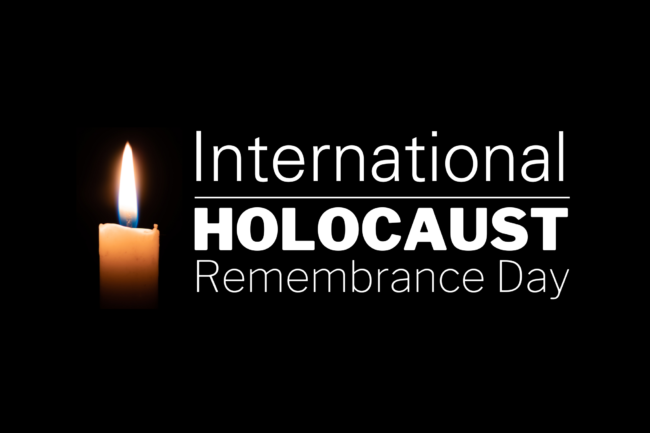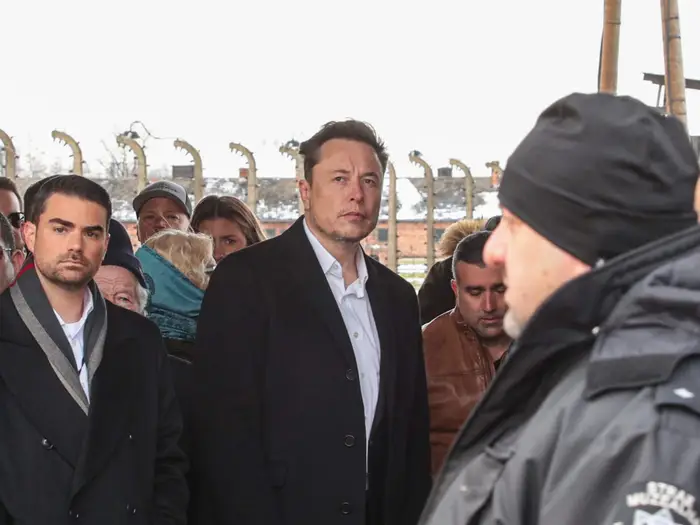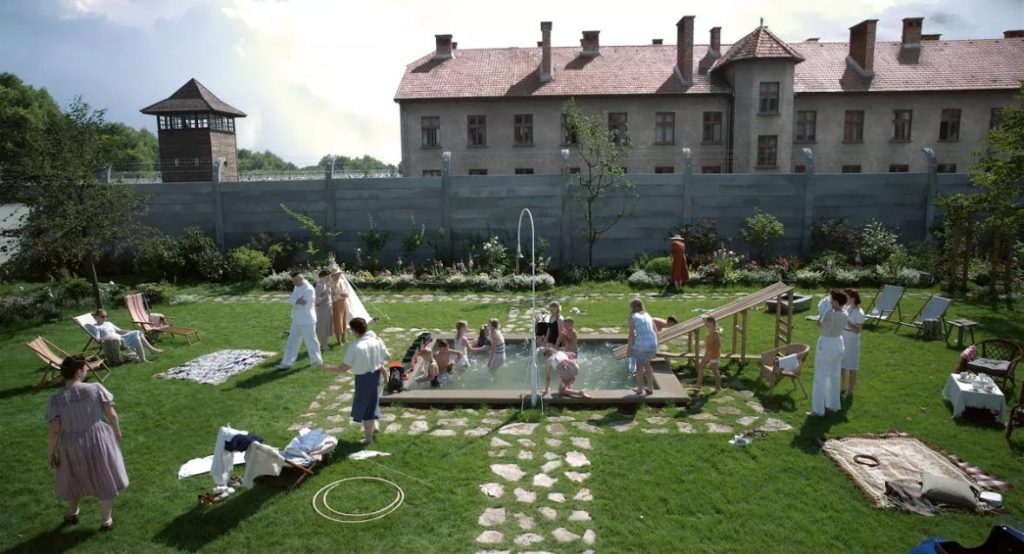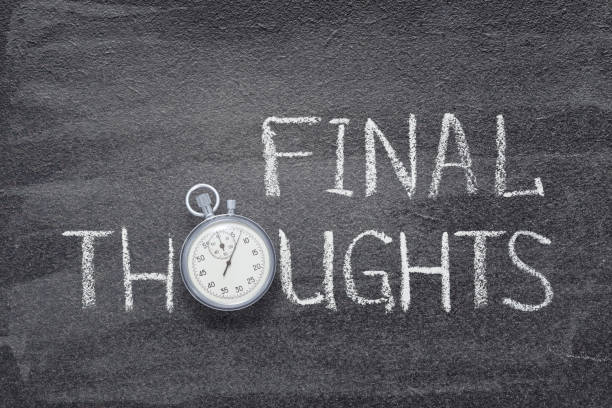Elon Musk visits Auschwitz, twisting the Holocaust into an excuse to make money
Plus: what sound does a crematorium make?

27 January 2024 – – Yesterday the International Court of Justice in the Gaza genocide case brought by South Africa issued a ruling, ordering Israel to take steps to prevent acts of genocide in Gaza but stopping short of ordering a ceasefire. I will address that ruling later this week in a more lengthy post.
Today I wish to focus on International Holocaust Remembrance Day and Auschwitz.
International Holocaust Remembrance Day (or the International Day in Memory of the Victims of the Holocaust) is an international memorial day designated by the United Nations to be the 27th of January, the anniversary of the liberation of the German Nazi concentration and extermination camp Auschwitz in 1945. Today marks the 79th anniversary of that liberation.
It is a day for everyone to reflect on and honor and remember the six million Jews murdered in the Holocaust, and also the genocides in Armenia, Bosnia, Cambodia, Chechnya, Darfur, Myanmar, Rwanda, Ukraine, Yemen, etc.
There is a full program at Auschwitz today. The main theme of the 79th anniversary is “the human”, symbolically visualised by the faces of the people imprisoned at Auschwitz, immortalized in drawings made during the existence of the camp and after the war. I saw many of these drawings on my visit to Auschwitz. In a note about today’s program, Auschwitz Museum Director Dr. Piotr M. A. Cywiński said:
Auschwitz is today associated by many primarily with its terrain: barbed wire, barracks and guard towers. It is an empty space filled with relics of camp architecture. Meanwhile, the drama and significance of Auschwitz is not about the relics, but about a Human. More than a million people, victims who were murdered, and people who survived. It is their faces – drawn by themselves – that we want to remember on the eve of the 80th anniversary of the liberation, which will take place next year: 27 January 2025.
As most of my regular readers know, over the last 6 years I have been involved in a film project that has been the most challenging of my career: a deep dive into the political uses of genocide and massacre, as seen through the life of Jacques Semelin, one of the world’s leading authorities on the subject. The movie will be completed this year.
I’ve come full circle. When I became involved in war crime investigation work 16+ years ago, I was introduced to Jacques’ work. My mentors told me he was the seminal authority on massacre and genocide.
The work has involved 100+ hours of video interview time with Jacques plus numerous other genocide authorities such as Serge Klarsfeld, Jean-Marc Dreyfus and Edyta Gawron. It has also allowed me unfettered access to the two Holocaust memorials in Paris, the Holocaust memorial in Washington D.C., a trip to the death camp at Auschwitz, and the “Topography of Terror” – an outdoor and indoor history museum in Berlin, Germany that is located on the remains of Nazi regime’s security entities: the Sicherheitspolizei, the Einsatzgruppen and the Gestapo. But my work also includes study of the genocides in Yugoslavia and Rwanda. What started as one film has now resulted in a series of videos and films.
Genocide is the most disturbing example of dehumanization‘s destructive power. Dehumanization fuels the worst brutality that human beings perpetrate against one another. It’s not just a problem of the modern industrialized world. It’s haunted humanity from millennia. We find traces of it in writings from the ancient civilizations of Egypt, China and Mesopotamia – in Medieval European characterizations of Jews and Medieval Arabs’ characterizations of black Africans, and far-flung indigenous cultures such as the head hunting Munduruku people of Brazil who referred to their human pray as pariwat, a word that’s otherwise reserved for game animals.
To mark International Holocaust Remembrance Day, I offer one item:
• A poem by Matilda Olkinaitė from an anthology in my library, Poetry of the Holocaust (2019). Matilda Olkinaitė, aged nineteen, was shot by local Nazi collaborators, together with other members of the two Jewish families in the Lithuanian village Panemunėlis. Poems such as this enable us to hear the voices of those who were murdered because they were Jewish, or disabled, or who opposed the Nazis on religious or political grounds.
ALL THE SKIFFS HAVE FOUNDERED
Matilda Olkinaitė
All the skiffs have foundered
And mine will sink as well.
Death is wading
Through troubled waters.
And Death bade me
Sing my final hymn.
And Death bade me
Dance my final dance.
And so I sing my hymn
To the seagulls and the swells.
The azure heavens listen,
And I sing to them too.
And the sea carries my skiff
Through a window,
Carries me away to sleep,
And will pull me under.
Tonight Death wanders
Through restless waters.
The sun has sunk already
And my skiff will sink as well.
Translated from Lithuanian by Laima Vincė

Multi-hyphenate billionaire Elon Musk is no stranger to spreading conspiracy theories, giving neo-Nazis a platform on the internet, and endorsing vicious antisemitic propaganda. After landing in hot water for an “abhorrent promotion of antisemitic and racist hate,” as the White House put it in its statement last year denouncing him for promoting horrid antisemitism, Musk is continuing on his apology tour.
First, he flew to Israel in an apparent attempt to quell a growing advertiser exodus fuelled by his hateful antics. Last week he used a visit to the Nazi death camp Auschwitz-Birkenau to clear his name. Worse yet, he has been spinning the trip into a self-serving and asinine argument for why his social media company X – formerly – Twitter is important.
According to a video presentation that played before Musk took the stage at an event in the nearby Polish city of Krakow, had social media existed in the 1930s, “the Holocaust would’ve never happened” – a blindingly ignorant argument, a string of them he is so proud of. Musk was joined by right-wing pundit Ben Shapiro for a conversation following the video.
The pair even went as far as to show photoshopped pictures of fake tweets, showing verified accounts alerting people of the atrocities taking place in Auschwitz in the 1940s. One fake Community Notes comment pointed out that the “Jewish community in Auschwitz is striving for food, not thriving” — an inconceivable attempt to make light of one of the darkest chapters in history.
“There are a million things you can say here but the most obvious one is before Nazi Germany built death camps they revoked the rights of free movement for Jewish people,” author Aaron Gordon wrote in a post on Bluesky, “and even if they could leave most countries barred all but a token number of refugee Jews from entry. Cartoon history shit”.
Beyond spreading antisemitic conspiracy theories on his social media network, Musk has also argued that Black students from Historically Black Colleges and Universities (HBCUs) shouldn’t become pilots, as he claimed their IQs aren’t high enough. “It will take an airplane crashing and killing hundreds of people for them to change this crazy policy of DIE,” he tweeted earlier this month, intentionally mixing up the letters of the acronym for “diversity, equity, and inclusion.
The racist outburst was met with outrage from civil rights groups. “The only thing anyone needs to hear from Musk about diversity in the workplace is an apology,” Marc Morial, president and CEO of the National Urban League, told NBC News, calling his statements “abhorrent and pathetic” at the time.
Meanwhile, Musk is still fumbling in trying to clear his name. “Two-thirds of my friends are Jewish,” he told audiences at the event in Krakow, as quoted by the New York Times. “I’m Jewish by association. I’m aspirationally Jewish”. According to Musk, he had never heard about antisemitism “at dinner conversations” and called it “like an absurdity — at least in my friend circles”.
That’s rich, coming from a man who’s thrown his considerable weight behind antisemitic conspiracy theories.

Above: An image from the movie “The Zone of Interest”
It is difficult to find the words that capture the experience of visiting such a place as Auschwitz. It is humanity’s most depraved and shameful exhibit towards the capacity of evil to take shape and form. There is a feeling in the air – a malevolence and smoldering evil – that fills the spaces where the giant crematorium and gas chambers once stood at Birkenau.
It is a chilling place. Auschwitz was a sprawling and interconnected series of slave labor camps that were built up around the main camp, which is remembered today as Auschwitz 1. This is where the only surviving gas chamber remains at the death camp, as well as scores of barracks, cells and torture chambers where Jews, political prisoners, gays, and other enemies of the state were held, tortured and enslaved.
But next to the exterior brick wall, topped with barbed wire that marked the boundaries of the camp, stands a large villa, a house. I remembered being shocked by the incongruence of a family home so close to the camp and was astounded that it remained.
This was the moment I first heard the story of the people who once lived in the house, and the woman who called the place a “paradise.” Her name was Hedwig Höss. She raised five children there with her husband, the commandant of Auschwitz. Rudolf Höss was executed at Auschwitz in 1947 for crimes against humanity. Höss was responsible for more than one million murders.
Over the years, I have often thought about that house and the people who lived there. When I first heard that a movie would be made about the Höss family and their paradise bordering the wall that marked the boundary of Auschwitz, I resolved to see it as soon as it was released. The movie is called “The Zone of Interest,” and is directed by Jonathan Glazer. When the audience I watched it with reached the end of the film, we sat in stunned silence.
I have never seen any movie like it, ever. There are no words. Simply, “The Zone of Interest” is the greatest meditation ever made on film about the banality of evil and the capacity of human beings to be indifferent towards cruelty that beggars imagination. I was delighted it earned 5 Oscar nominations.
And I had a personal interest. I know the sound designer on the film, Johnnie Burn. One of the Oscar nominations the movie earned is for sound. He was recently interviewed about how he and the director, Jonathan Glazer, tried to reveal how ordinary people can quickly become accustomed to horror. Here are few snippets from that interview:
Jonathan was about to start the picture edit and he needed a sound for the crematorium. There’s the film you see and the film you hear. When I had read the script, I thought: “Jesus, for the sound to carry off the intent of the film – its juxtapositions and responsibility to history – how do you respectfully reproduce the sound of mass murder?” It was complex.
To recreate the sound of the crematorium, Burn goes on to explain how he put a microphone in the chimney above his fireplace, using cardboard to manipulate the rhythm. “I started adding footsteps of people we’d recorded on production and the sounds of textile and armament machines”, he explained. “That sound – the machine of death, the soil of the place – became a shorthand. It subverted the need for sensationalization”.
Glazer started using Burn’s recording incidentally before deciding to keep it as a constant background rumble. The noises are guttural, near primordial, and seem to play in the characters’ subconscious; the sounds of sporadic gunshots during lunch, or distant screams while the Höss children are tucked into bed, are made all the more chilling by how little they respond to them.
To achieve this dissonance, Glazer had the family drama filmed first, using multiple cameras throughout the house so that the actors never knew which they were playing to, and only added the camp sounds in post-production. “It was very much a case of making it as credible as possible – an immersion into the everyday mundanity and humdrumness of real family life”.
For the shoot, Glazer was given permission to film outside the camp but chose not to use the Höss home – which still stands but is privately owned – instead, building it afresh, as it would have looked at the time. The results are uncanny, a tacit denial of historical distance that Burn responds to in his sound design. “It needed to feel like a found document, one with no patina or sepia edge. I think the most direct way to connect with people is to say: “look at this, this is real, it could be now'”.
To create the library of sounds, Burn researched for over a year – interviewing survivors, scouring the Auschwitz archive and reading whatever literature he could find:
I was looking at anything that referenced sound. In witness testimonies, for example, I learned there was a roll call with a bugle, people also said that the electric fence was audible, it had a kind of buzz and rattle to it.
Working from this information, Burn recreated the sound of a person using the fence to attempt suicide but chose to cut it out. “I felt the responsibility of not sensationalizing anything. I was also aware that we were painting pictures in people’s heads based on the collective knowledge we all have”.
Glazer’s approach was to strip back wherever possible. This is clear from the opening scene – or lack thereof – when the warped and thunderous overture plays over an entirely black screen, which suddenly gives way to a bucolic image of the Höss family picnicking by a lake. The huge descent and then the birdsong, what a way into a film. The unintended consequence was that it also said: “use your ears”.

As I noted above, genocide is the most disturbing example of dehumanization‘s destructive power. Dehumanization fuels the worst brutality that human beings perpetrate against one another. It’s not just a problem of the modern industrialized world. It’s haunted humanity from millennia.
That’s the premise of my movie which I am producing with the videographer Marco Vallini. I asked Marco to pull together a few clips from some of our filming which will give you an idea of the themes we’ll explore: